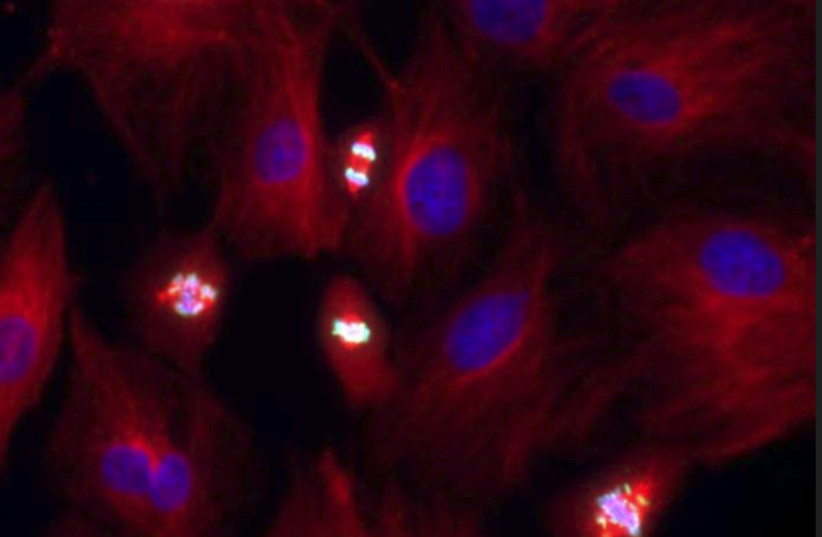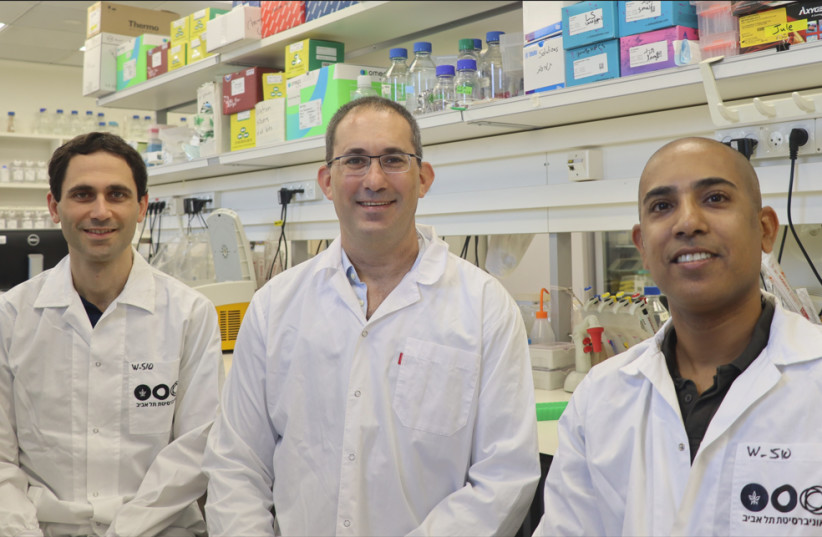Scientists at Tel Aviv University (TAU) warn that while the CRISPR genome-editing method is very effective, it is not always safe and that sometimes, rearranging pieces of DNA compromises genomic stability, possibly triggering cancer in the long run.
CRISPR – an acronym for “clustered regularly interspaced short palindromic repeats” – allows genetic material to be added, removed or altered at particular locations in the genome. Several approaches to genome editing have been developed.
The best-known technology is called CRISPR-Cas9 gene scissors (CRISPR-associated protein 9), for which the 2020 Nobel Prize in Chemistry was awarded to the American scientist Jennifer A. Doudna and French scientist Emmanuelle Charpentier in recognition of their discovery. Developed about a decade ago, it has already proved impressively effective in treating a range of diseases including cancer, liver diseases, genetic syndromes and more.
“Our intention in this study was to shed light on potential risks in the use of CRISPR therapeutics,” the researchers wrote. “We did this even though we are aware of the technology’s substantial advantages.”
“Our intention in this study was to shed light on potential risks in the use of CRISPR therapeutics. We did this even though we are aware of the technology's substantial advantages."
TAU's Dr. Adi Barzel and his doctoral student Alessio Nahmad
The first approved clinical trial ever to use it was conducted in 2020 at the University of Pennsylvania, when researchers applied the method to T-cells – white blood cells of the immune system. Taking T-cells from a donor, they expressed an engineered receptor targeting cancer cells, while using CRISPR to destroy genes coding for the original receptor – which otherwise might have caused the T-cells to attack cells in the recipient's body.


This has triggered a lot of excitement in the scientific community because it is faster, cheaper, more accurate and more efficient than other genome-editing methods. However, the technique raises ethical concerns because of the potential of changing human genomes.
CRISPR-Cas9 was adapted from a naturally occurring genome-editing system that bacteria use as an immune defense. When infected with viruses, bacteria capture small pieces of the viruses’ DNA and insert them into their own DNA in a particular pattern to create segments known as CRISPR arrays.
The CRISPR arrays allow the bacteria to “remember” the viruses or closely related ones. If the viruses attack again, the bacteria produce RNA segments from the CRISPR arrays that recognize and attach to specific regions of the viruses’ DNA. The bacteria then use Cas9 or a similar enzyme to cut the DNA apart, which disables the virus.
The new TAU study identifies risks in the use of CRISPR therapeutics. Investigating the impact of this technology on T-cells – white blood cells of the immune system – the researchers detected a loss of genetic material in a significant percentage, up to 10% of the treated cells. They explain that such loss can lead to destabilization of the genome, which might cause cancer.
The study is titled “Frequent aneuploidy in primary human T cells after CRISPR–Cas9 cleavage” and was just published in the leading journal Nature Biotechnology.
The research was led by Dr. Adi Barzel from the School of Neurobiology, Biochemistry and Biophysics at TAU’s Wise Faculty of Life Sciences and Dotan Center for Advanced Therapies, and by Dr. Asaf Madi and Dr. Uri Ben-David from TAU’s Faculty of Medicine and the Safra Center for Bioinformatics, in collaboration with Tel Aviv Sourasky Medical Center.
Risk vs benefit
The Israeli researchers sought to examine whether the potential benefits of CRISPR therapeutics might be offset by risks resulting from the cleavage itself, assuming that broken DNA is not always able to recover.
Ben-David and his research associate Eli Reuveni explained that “the genome in our cells often breaks due to natural causes, but usually it is able to repair itself, with no harm done. Still, sometimes a certain chromosome is unable to bounce back, and large sections or even the entire chromosome are lost. Such chromosomal disruptions can destabilize the genome, and we often see this in cancer cells. Thus, CRISPR therapeutics, in which DNA is cleaved intentionally as a means for treating cancer, might, in extreme scenarios, actually promote malignancies.”


To examine the extent of potential damage, the researchers repeated the 2020 Pennsylvania experiment, cleaving the T-cells’ genome in exactly the same locations – chromosomes 2, 7, and 14 of the human genome’s 23 pairs of chromosomes.
Using a state-of-the-art technology called single-cell RNA sequencing, they analyzed each cell separately and measured the expression levels of each chromosome in every cell. In this way, a significant loss of genetic material was detected in some of the cells.
For example, when chromosome 14 had been cleaved, about 5% of the cells showed little or no expression of this chromosome. When all chromosomes were cleaved simultaneously, the damage increased, with 9%, 10% and 3% of the cells unable to repair the break in chromosomes 14, 7 and 2 respectively. The three chromosomes did differ, however, in the extent of the damage they sustained.
Madi and his student Ella Goldschmidt added, “Single-cell RNA sequencing and computational analyses enabled us to obtain very precise results. We found that the cause for the difference in damage was the exact place of the cleaving on each of the three chromosomes. Altogether, our findings indicate that over nine percent of the T-cells genetically edited with the CRISPR technique had lost a significant amount of genetic material. Such loss can lead to destabilization of the genome, which might promote cancer.”
Splice with caution
Based on their findings, the researchers caution that extra care should be taken when using CRISPR therapeutics. They also propose alternative, less-risky methods for specific medical procedures and recommend further research into two kinds of potential solutions – reducing the production of damaged cells or identifying damaged cells and removing them before the material is administered to the patient.
Barzel and his doctoral student Alessio Nahmad concluded that “our intention in this study was to shed light on potential risks in the use of CRISPR therapeutics. We did this even though we are aware of the technology's substantial advantages. In fact, in other studies we have developed CRISPR-based treatments, including a promising therapy for AIDS. We have even established two companies – one using CRISPR and the other deliberately avoiding this technology. In other words, we advance this highly effective technology, while at the same time cautioning against its potential dangers.”
“This may seem like a contradiction, but as scientists we are quite proud of our approach, because we believe that this is the very essence of science: we don’t choose sides. We examine all aspects of an issue, both positive and negative, and look for answers,” they added.
